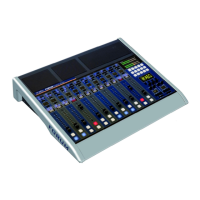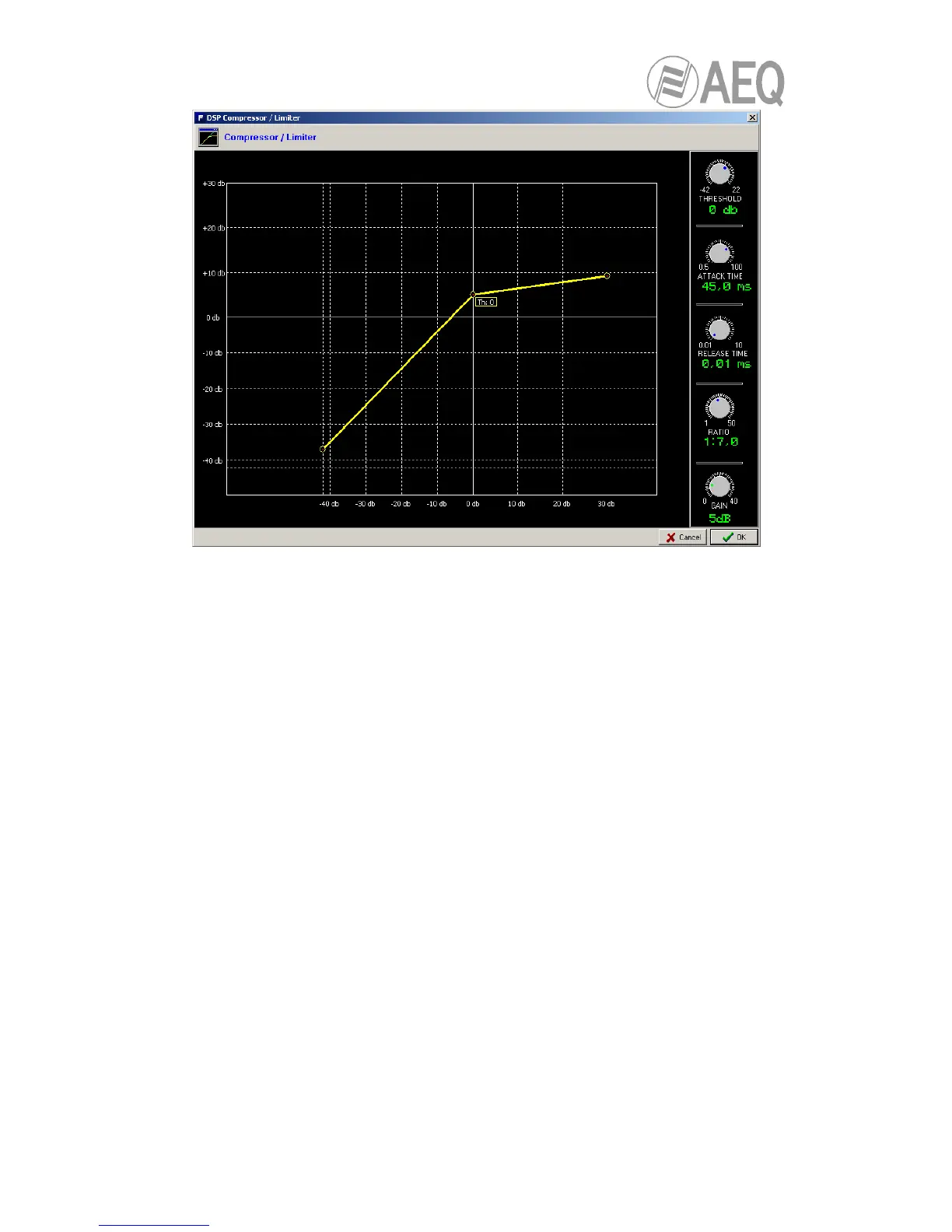AEQ FORUM
Digital audio mixer for broadcast applications
85
Dynamics processors are used to modify the dynamic ranges of an audio signal to adapt it to
specific needs or to produce certain sound effects. A compressor enables you to reduce the
dynamic range of the signal. Your purpose may be to adapt a signal with a very broad dynamic
range to a circuit that will not support such wide variations in level, or to generate a certain
sound in a signal.
The graph represents the variation produced in the different levels of the signal applied to this
function. On the horizontal axis are the input levels, while the vertical axis shows output levels.
The “Compressor/Limiter” function acts as a “constant gain” compressor; that is, below the
threshold, all input signals are amplified (or not amplified) equally, while above the threshold,
the input levels are reduced to a greater or lesser degree according to the compression ratio.
If the compression range selected is the maximum, the function will act as a limiter in such a
way that the signals that exceed the selected threshold at input will not exceed a certain level at
output. For example, with a threshold = 0 dB, a gain of 10 dB and a compression ratio of 1:50,
you will ensure that all the signals that exceed 10 dB at input will also be output at 10 dB, while
the signals that are below the threshold will have an overall gain of 10 dB.
The available controls are:
• “THRESHOLD”: this is the threshold above which the compressor will act. Signal levels
that exceed this threshold will be affected by the compressor settings. The threshold
range varies from -42dB to +22dB.
• “ATTACK TIME”: this is the time it takes the compressor to react to an increase in the
input signal. It ranges between 0.5 and 100 ms.
• “RELEASE TIME”: this is the maintenance time during which the compressor keeps
acting, even when the level of the input signal has fallen below the threshold. It ranges
between 0.01 and 10 s.
• “RATIO”: this is the compression ratio. A ratio of 1:1 does not involve any variation in
the signal, as the level of the input signal is maintained at the output. A ratio of 2:1
indicates that the level of an input signal which exceeds the threshold will be reduced to
half at the output. The highest ratio available is 50:1, which will be used to implement
signal limiters. The limiter must reduce all signals exceeding a certain level to that level.

